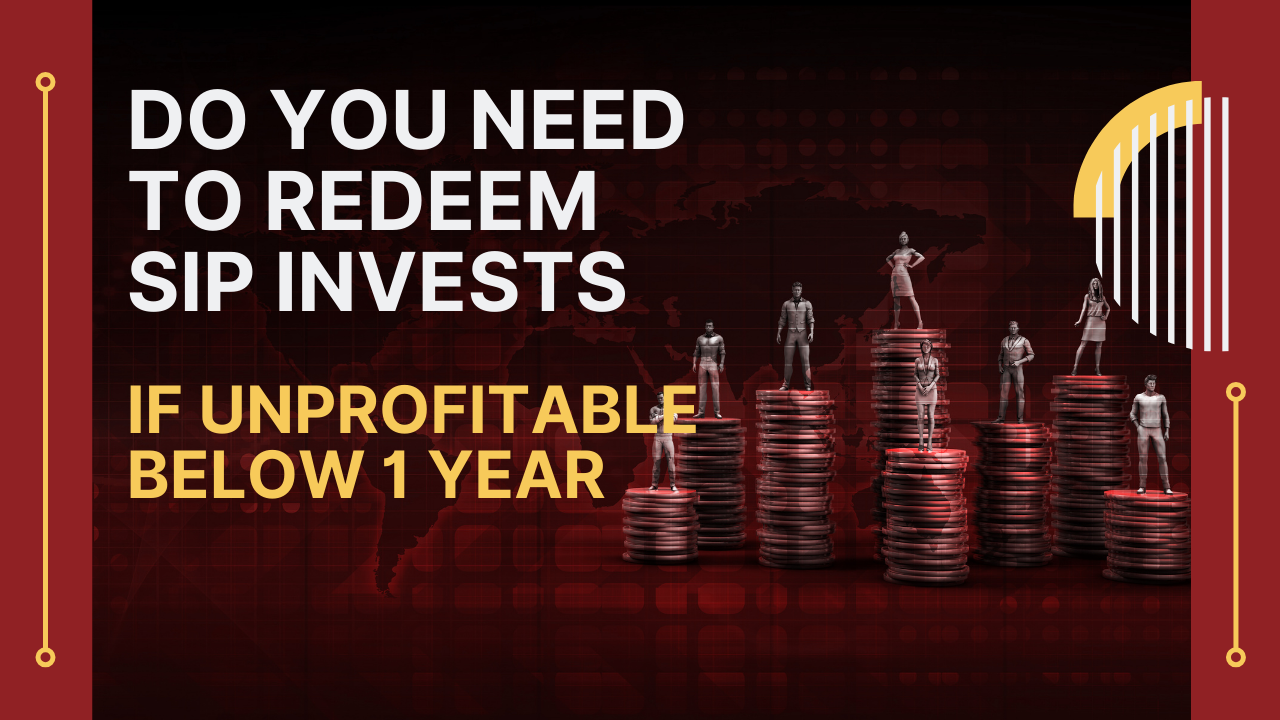Regularly Review Your Investment Portfolio
Regularly Review Your Investment Portfolio
One of the most important habits of successful investors is regularly reviewing their portfolios. Investment portfolios are dynamic, and what works today may not necessarily be the best strategy tomorrow. Regular reviews ensure that your portfolio remains aligned with your financial goals, risk tolerance, and market conditions. Team Investor Sarthi emphasizes the importance of this ongoing evaluation to stay on track and achieve long-term financial success.
Why Regularly Reviewing Your Portfolio is Important
- Ensure Alignment with Financial Goals:
- Over time, your financial goals may evolve. Regular portfolio reviews allow you to adjust your investments to align with any changes in your life goals, such as saving for retirement, funding a child’s education, or purchasing a home.
- Adapt to Changing Market Conditions:
- Market conditions fluctuate due to economic changes, inflation, geopolitical events, or technological advancements. Periodically reviewing your portfolio ensures that it responds to these shifts, taking advantage of opportunities or reducing exposure to risk.
- Over time, different investments grow at different rates, which can lead to an unstable portfolio. Rebalancing helps you maintain your desired level of diversification and risk. If one asset class has outperformed, it may constitute a higher percentage of your portfolio than intended.
- The market is volatile, and certain investments may become riskier as conditions change. Regular reviews help you identify high-risk areas that may no longer fit your risk tolerance, ensuring that your portfolio is as safe or aggressive as you need it to be.
- By periodically reviewing and optimizing your portfolio, you can identify underperforming investments and replace them with better opportunities, ensuring that your portfolio continues to work hard for you.
- Tax laws and investment tax implications can change over time. Regular portfolio reviews help you ensure that your investments are tax-efficient, making adjustments to minimize tax liabilities or taking advantage of tax-deferred or tax-free options when necessary.
- Rebalance Asset Allocation:
- Minimize Risk:
- Optimize Returns:
- Tax Efficiency:
How to Review Your Portfolio Effectively
1. Assess Your Investment Objectives
- Review your investment goals and time horizon. Are you saving for short-term goals (like buying a house) or long-term goals (like retirement)? Adjust your asset allocation and risk level based on your goals and the time you have until you need the funds.
- Tips:
- If your goals have changed, adjust your portfolio accordingly. For example, if you’re closer to retirement, you may want to move to less volatile assets.
2. Evaluate Asset Allocation and Diversification
- Ensure your asset allocation (the proportion of mutualfunds, stocks, bonds etc.) reflects your risk tolerance and investment horizon. Over time, markets move, and certain asset classes may grow faster than others, leading to an imbalance.
- Tips:
- If stocks have performed better than bonds, your portfolio might now be riskier than you intended. Rebalancing is the key to maintaining the right mix of assets.
3. Check the Performance of Individual Investments
- Review each investment’s performance. Are your stocks, bonds, or mutual funds meeting expectations? Are there underperforming assets that may need to be replaced or sold?
- Tips:
- Set benchmarks for performance (e.g., comparing a stock’s performance to an mutualfunds) to help assess whether your investments are on track.
4. Rebalance Your Portfolio as Needed
- Rebalancing involves buying and selling investments to restore your portfolio’s original allocation. It’s a way to maintain the desired level of diversification and risk.
- How to Rebalance:
- If one asset class has grown significantly in value, consider selling some to bring your allocation back to its target. You can use the proceeds to buy more of the underperforming assets (e.g., mutualfunds) to maintain balance.
5. Review Fees and Costs
- Check the fees associated with your investments. High fees can erode long-term returns, so it's important to ensure that you’re not overpaying for management or transaction costs.
- Tips:
- Look for cheaper alternatives (e.g. mutualfunds or ETFs) if your current investments are too expensive, especially if the performance isn’t justified by the fees.
6. Monitor for Life Changes or Major Events
- Significant life changes—such as marriage, children, job changes, or retirement—can impact your financial situation and goals. Adjust your portfolio to reflect these changes.
- Tips:
- For example, if you're expecting a child, you might want to shift to more conservative investments or start saving for education expenses. Similarly, if you're approaching retirement, you might want to reduce your exposure to high-risk assets.
7. Keep an Eye on Tax Implications
- Understand the tax consequences of your investments. Different investment accounts (like tax-deferred retirement accounts versus taxable brokerage accounts) have different tax treatments, and your portfolio might need adjustments to minimize taxes.
- Tips:
- Tax-loss harvesting (selling investments at a loss to offset gains) is one strategy you can use to manage your tax liability.
How Often Should You Review Your Portfolio?
- Quarterly Reviews:
- Most investors find it helpful to review their portfolio quarterly to track performance and market trends.
- Annual Comprehensive Review:
- Once a year, do a thorough review of your entire portfolio. Look at performance, risk tolerance, diversification, and any changes in your life situation or financial goals.
- If there are major changes in the market or your life (e.g., a market crash, job loss, retirement), consider reviewing your portfolio immediately.
- Trigger-Based Reviews:
Common Mistakes to Avoid When Reviewing Your Portfolio
- Reviewing Too Frequently:
- Checking your portfolio too often can lead to emotional decision-making. It’s important to stay patient and avoid reacting to short-term market fluctuations.
- Neglecting Rebalancing:
- Failing to rebalance can lead to a portfolio that’s out of sync with your goals and risk tolerance, increasing the potential for unexpected losses.
- Focusing solely on returns while ignoring fees can reduce your overall gains. Ensure that you’re not overpaying for management fees, trading costs, or commissions.
- Don’t make decisions based on past performance alone. Just because an asset has done well recently doesn’t mean it will continue to outperform in the future.
- It’s easy to make knee-jerk reactions to market volatility, but a well-diversified portfolio should weather market fluctuations without needing drastic changes.
- Ignoring Costs:
- Chasing Performance:
- Being Reactive Rather than Strategic:
FAQs on Regular Portfolio Reviews
1. How do I know if my portfolio is underperforming?
- Compare your portfolio’s performance to relevant benchmarks (e.g., stock market indices like the S&P 500) and assess whether your investments are meeting your expectations.
2. What should I do if I don’t have time to review my portfolio regularly?
- Consider working with a financial advisor to review your portfolio on your behalf, or use automated investment services (like robo-advisors) that automatically rebalance your portfolio.
3. How do I handle changes in market conditions?
- If you are concerned about market conditions, ensure your portfolio is diversified and balanced to manage risk. Avoid making drastic changes based on short-term market movements.
4. Is it better to review my portfolio based on performance or my goals?
- Your portfolio review should be based on your goals. Ensure that your asset allocation and investments align with your financial objectives, not just performance.
Key Takeaways from Team Investor Sarthi on Portfolio Review
- “Review Your Portfolio Regularly: Ensure your investments stay aligned with your goals, risk tolerance, and market conditions.”
- “Balance and Diversify: Periodically rebalance to maintain proper asset allocation and diversification.”
- “Don’t Overreact to Market Fluctuations: Stay focused on long-term goals and avoid making emotional decisions.”
- “Consider Costs and Fees: Regularly check the fees associated with your investments to avoid unnecessary costs.”
- “Adjust for Life Changes: Update your portfolio in response to any significant life or financial changes.”
By reviewing your portfolio regularly, you can make sure it stays on track and adjusts to changes in both the market and your personal situation. For personalized guidance on portfolio management, reach out to Team Investor Sarthi!





















